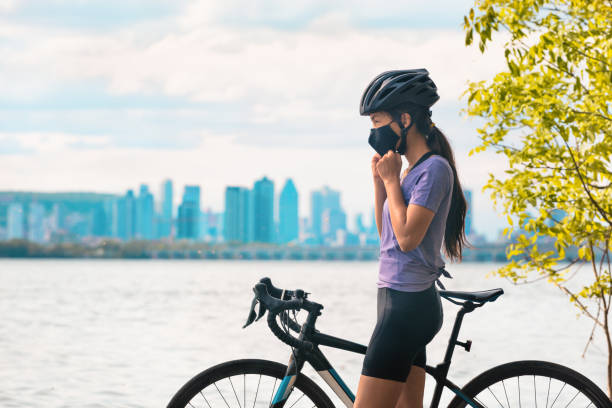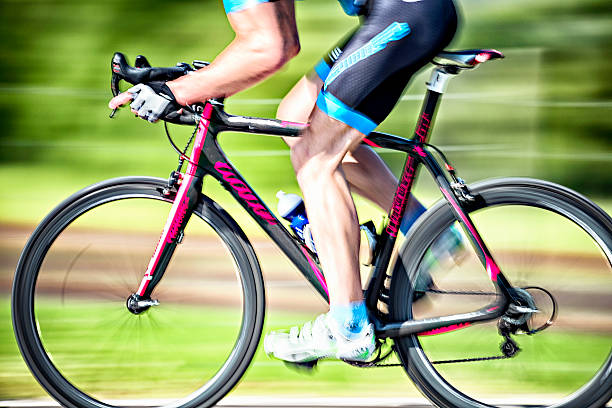A primary worry for cyclists is determining how to prevent getting a flat tire on their road bike. Flat tires can not only cause annoyance but can also pose a risk on busy roads. This article explores numerous effective methods for preventing flat tires on your road bike. By familiarizing yourself with these tips, you can cycle confidently, free from the fear of experiencing a flat tire.
Identifying Bike Tires
Before anything else, you must know that there are three different types of road bike tires, and each has its pros and cons. These tires have different features suitable for your riding requirement. Identify which kind of tire your bike has to know which tire parts are replaceable.
Tubeless Tires
Using tubeless for your bike tire benefits accidental flat tire incidents. This type of tire doesn’t have an inner tube, but that doesn’t mean it is completely a puncture-resistant tire. But it has puncture protection when incorporated with tire sealant.
Clincher
This type of tire is the most common and traditional tire in bikes. This type has an inner tube inside where the air is maintained.
Tubular
The tubular tire still has an inner tube, but it is attached to the tire. It has excellent performance benefits but is not suitable for recreational bikers. It is also difficult to repair this type in the case of a flat bike tire.

Ensure the Proper Tire Pressure
First and foremost, make sure that each bike tire is properly inflated before hitting the road. This is especially important if you are using new tires. If you notice that the air pressure is less than it should be, you need to adjust the pressure.
Use a tire pressure gauge to make sure that you are getting the proper amount of air into your tires. If the pressure is at least 32 PSI, then you are good to go. However, if the tire pressure is below 30 PSI, then you should adjust it as soon as possible. Ignoring underinflated tires can result to pinch flats. So, it’s better to check each time you ride your bike.
If you don’t have a gauge, try to find one at your local auto parts store. You can also use the pressure of a penny or a nail to determine the proper amount of air in your tires. In order for the tires to wear evenly and stay in good condition, you need to regularly replace them.
The importance of air pressure of the front and rear tires when riding a road bike is often underestimated. Too much and under pressure, and you’ll get pinch flats. Too little pressure, and you’ll end up with a flat tire. It is important to check the pressure regularly.
A good way of checking the pressure of your tires is by using a tire gauge. It is important to remember that the pressure on a bicycle tire is about the air pressure in the atmosphere. If you’re riding at a very high altitude, it’s important to check the tires’ air pressure at least once every month.
Mountain bikes are designed to be ridden on rough terrain or in extreme weather. Therefore, the mountain bike has wider tire width than road bike tires. It is important to be aware that tires are not interchangeable between all brands of bicycles. For example, you can’t just put the same tire on a bike with a flat-mount rim and expect it to work. Bicycle tires are typically made of a compound rubber compound. The compound is generally vulcanized and then pressure-aged to give it its characteristics.
It is important to determine the correct tire pressure for a bicycle by using the following guidelines.
The basic rule is that the lower your tire pressure, the softer your ride. You will notice this immediately as you dismount and walk around with your bike on a flat surface.
- There is a second aspect to tire pressure, which has nothing to do with ride quality.
- There are many different types of tires and, as such, have various pressures that they can handle. All tires have a maximum rate of tire pressure (or “burst”). The consumer must know the maximum tire pressure rating and must not exceed that value.
- Many tires have a standard pressure (or “normal”) rating, which the manufacturer chooses based on their best guess at what is appropriate for an average rider.
- Two things can happen when you exceed a tire’s maximum pressure rating. The first is that the tire will burst unexpectedly, and the second is that the tire will not perform as well as it should.

How to Know if Your Tires Need to be Replaced
The most common signs that your tires need to be replaced are when the tread on the tire gets worn down to half of an inch. Tire types will determine how often they need to be replaced. For example, when it comes to the tire you drive on a daily basis, you would want to replace them after about three years. However, it would be best if you considered replacing your spare tire every year.
The most common signs that your tires need to be replaced are when the tread on the tire gets worn down to half of an inch.
A good idea would be to replace all of your tires if they are more than a year old. Tires that are more than a year old can be replaced with new tires of the same make and model. It is also important to check your tire pressure often because low tire air pressure can lead to flat tires.
It is recommended that you inflate them to the maximum of what they are marked for. If you have spare tires, it is recommended that you use them for your car’s spare tire. Because of the high costs of replacing the wheel and tire assembly, leaving your spare wheel sitting around in your garage is not a good idea.
One of the most common issues with road bikes is getting a flat tire. As mentioned, this can ruin your ride and leave you stranded on the side of the road. Luckily, there are some things you can do to avoid getting a flat in the first place.
The best way to avoid getting a flat tire on your road bike is to check your tires before every ride. Here are four easy steps to follow:
- Inspect the tread on your tires for any signs of wear and tear. If the tread is worn down, it’s time for a new set of tires.
- Look for any cracks in the rubber and punctures in the tire sidewall.
- Check the pressure on your tires with a gauge.
- If you see any signs of wear or damage, replace them immediately.
Here are some additional tips:
- Check your tires regularly before every ride
- Inflate your tires to the recommended pressure
- Use the correct type of tire for the terrain you’re riding on
- Keep your tires clean and free of debris
- Keep your bike adjusted properly
- Replace your tires and inner tube when they are worn out
- Use a good quality tire sealant for tubeless tires
- Use tire liners when applicable
- Carry a spare tube, tire levers, and tools to fix flat tires

Bike Maintenance
Biking is a great way to get some exercise and enjoy the outdoors. Whether riding for leisure or commuting to work, it’s important to keep your bike in good condition. This includes regularly inspecting your bike for potential problems and maintaining the tires. When inspecting your bicycle for potential problems, check the following:
- Inspect the wheels and tires for cracks, leaks, or other damage. Make sure that the tire pressure is at its proper level. Keep your bike clean and dry. Cleaning the frame, wheels, and other parts on your bike can help prevent rusting and corrosion.
- Inspect the stem for cracks or damage. If it is cracked or damaged, replace it with a new one.
- Check all cables for damage or corrosion. Inspect the chain and sprockets for excessive wear, cracks, and corrosion.
- Check the seat for any damage that may be caused by riding. If it is damaged, replace it with a new one.
- Check the handlebars for any cracks or damage. If they are damaged, replace them with new ones.
- Inspect the rear derailleur, chain, and cassette for wear and damage.
- Check the brakes for excessive wear of brake pads or a lack of stopping power.
- Check the grips for damage or wear.
- Check the wheels for excessive wear and cracks, as well as any damage caused by riding. If they are damaged, replace them with new ones.
- Inspect the frame for chips and scratches.
- Check the frame for any cracks or damage. If they are damaged, replace them with new ones.
- Check the headset and stem for excessive wear and damage. If they are damaged, replace them with new ones.
- Check the saddle for any damage or wear.
- Check the handlebars for any damage or wear.
- Check all cables and housing for excessive wear or damage.
Conclusion
By following these tips, you can help to avoid getting a flat tire on your road bike. Always wear a helmet, keep your bike in good condition, and be aware of your surroundings. If you get a flat tire, know how to change it and have the necessary tools. You can ensure that your ride is safe and enjoyable by being prepared.





